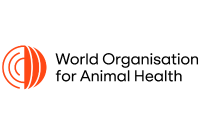World Organisation for Animal Health
National Veterinary Services (VS) play critical roles in protecting animal health and welfare, sharing responsibilities on issues requiring a multi-sectoral One Health approach, including zoonosis prevention and control. VS ensures a veterinary workforce with sufficient numbers trained in the appropriate competencies. Many World Organisation for Animal Health (WOAH, founded as OIE) Members in the region face challenges ensuring that an adequate enabling environment is in place for veterinarians and Veterinary Paraprofessionals (VPPs) to work to their optimal capacity. An enabling environment is defined by clear prerogatives, appropriate legislation and regulation, stakeholder coordination and communication, and educational provision. VPPs also play crucial roles in VS, making up more than half of the workforce in much of Asia and the Pacific region.
‘Veterinary workforce’ is defined by the number, distribution and type of personnel working in the veterinary services across the public and private sectors.
The public functions of veterinarians are comprised of Animal Health policy, Animal disease surveillance/control/eradication, Certification of animal health for trade, Veterinary public health, etc., while private functions involve clinical animal health services, production services such as pregnancy diagnosis, and so on.
The veterinary workforce includes veterinarians of different specialisms, and VPPs working in animal health, veterinary public health (such as meat inspection) and laboratories in urban, rural and remote settings.
Given the wide and various functions veterinary services are responsible for, veterinary workforce planning, and identifying who delivers which service, is important to strengthen the veterinary service in a country.
Systematic workforce assessments can identify gaps in the numbers and categories of personnel required in the country.
For a workforce to conduct their activities effectively, they require an enabling environment, which includes adequate and updated legislation, regulation, education and coordination/collaboration mechanisms.
Success stories
Resources
Veterinary Workforce Development: Strengthening national Veterinary Services
VPP means a person who, for the purposes of the Terrestrial Code, is authorised by the veterinary statutory body to carry out certain designated tasks (dependent upon the category of veterinary paraprofessional) in a territory, and delegated to them under the responsibility and direction of a veterinarian. The tasks for each category of veterinary paraprofessional should be defined by the veterinary statutory body depending on qualifications and training, and in accordance with need. In Members, where VSB does not regulate VPPs, a VPP maybe defined as a person who is not a veterinarian but has received at least one year of formal training in animal health/production from a recognised /accredited institution resulting in a certificate, diploma or degree, and who is currently active. VPPs play an important role in providing basic veterinary service delivery in most resource-constrained or developing countries, occupying a range of roles in animal health, veterinary public health and laboratories. Considering the importance of VPPs, WOAH has organized multiple events as well as published guidelines on VPPs.
VSB is defined as an autonomous regulatory body for veterinarians and veterinary paraprofessionals (Terrestrial code glossary). In the WOAH code, establishment of VSB with the power of defining the specific categories of veterinary and VPP practitioners to be recognized in the country and of implementing the system of controls is recommended. VSB is essential to ensure the effectiveness of veterinary services. For more information, please visit the Veterinary Education and VBS page.
Veterinary Education plays a significant role in strengthening the veterinary workforce. WOAH has supported Members to develop and strengthen Veterinary Education by sharing information and organizing workshops. For more information, please visit the Veterinary Education and VSB page.
WOAH continues to support the strengthening of the VS, Veterinary Education Establishments (VEEs), Veterinary Legislation and Veterinary Statutory Bodies (VSBs) globally and regionally through its global programme for Performance of Veterinary Services (PVS) pathway, including PVS Evaluations and Gap Analysis and more targeted initiatives like VEE and VSB twinning projects and the Veterinary Legislation Support Programme (VLSP).
PVS Pathway is WOAH’s flagship capacity-building platform for the sustainable improvement of national Veterinary Services. Through its evaluation and planning process, it can provide members with support for workforce assessment and planning. Targeted support can support Members in strengthening an enabling environment for a good veterinary workforce. For more information, please visit the PVS page. WOAH is currently supporting some pilot initiatives to develop additional support programs in this area.
In addition, the organisation has published Competency and Curricula Guidelines for VEEs and VPPs to facilitate development and reviewing of the curriculums and to promote competency/skill-based trainings. The organisation also organises regional and sub-regional workshops on related topics to foster opportunities for experience-sharing among Members.
